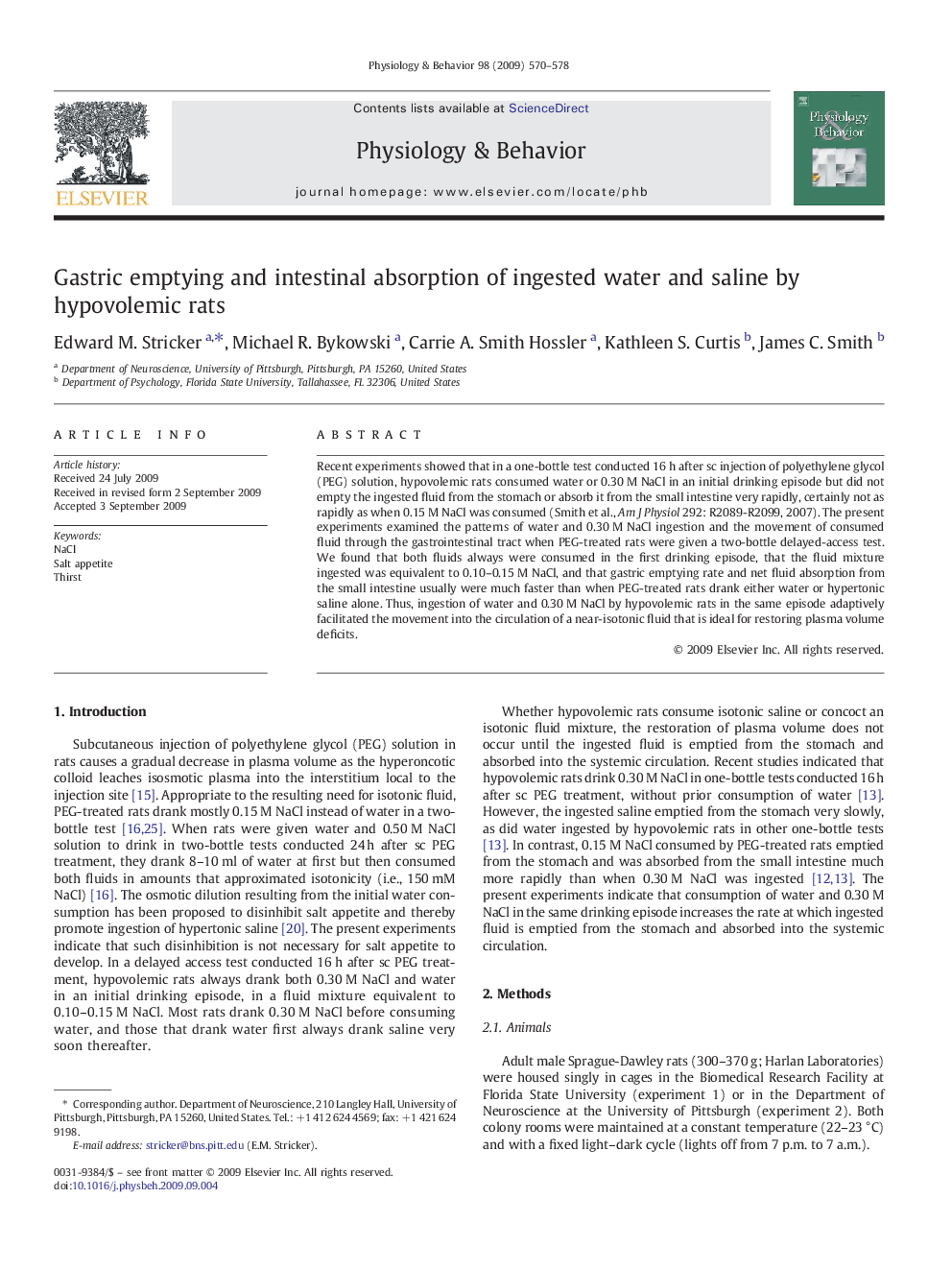| Article ID | Journal | Published Year | Pages | File Type |
|---|---|---|---|---|
| 2845303 | Physiology & Behavior | 2009 | 9 Pages |
Recent experiments showed that in a one-bottle test conducted 16 h after sc injection of polyethylene glycol (PEG) solution, hypovolemic rats consumed water or 0.30 M NaCl in an initial drinking episode but did not empty the ingested fluid from the stomach or absorb it from the small intestine very rapidly, certainly not as rapidly as when 0.15 M NaCl was consumed (Smith et al., Am J Physiol 292: R2089-R2099, 2007). The present experiments examined the patterns of water and 0.30 M NaCl ingestion and the movement of consumed fluid through the gastrointestinal tract when PEG-treated rats were given a two-bottle delayed-access test. We found that both fluids always were consumed in the first drinking episode, that the fluid mixture ingested was equivalent to 0.10–0.15 M NaCl, and that gastric emptying rate and net fluid absorption from the small intestine usually were much faster than when PEG-treated rats drank either water or hypertonic saline alone. Thus, ingestion of water and 0.30 M NaCl by hypovolemic rats in the same episode adaptively facilitated the movement into the circulation of a near-isotonic fluid that is ideal for restoring plasma volume deficits.
